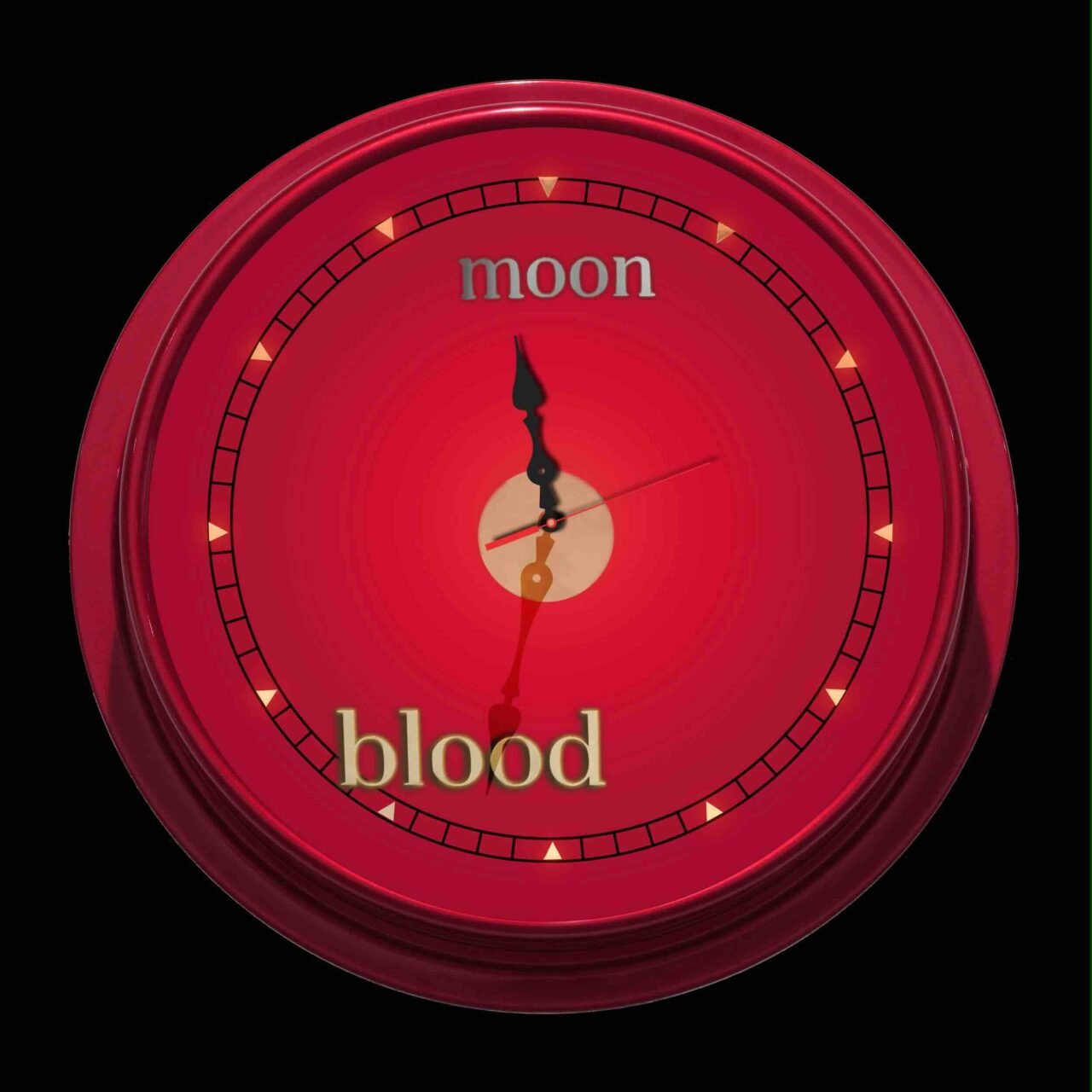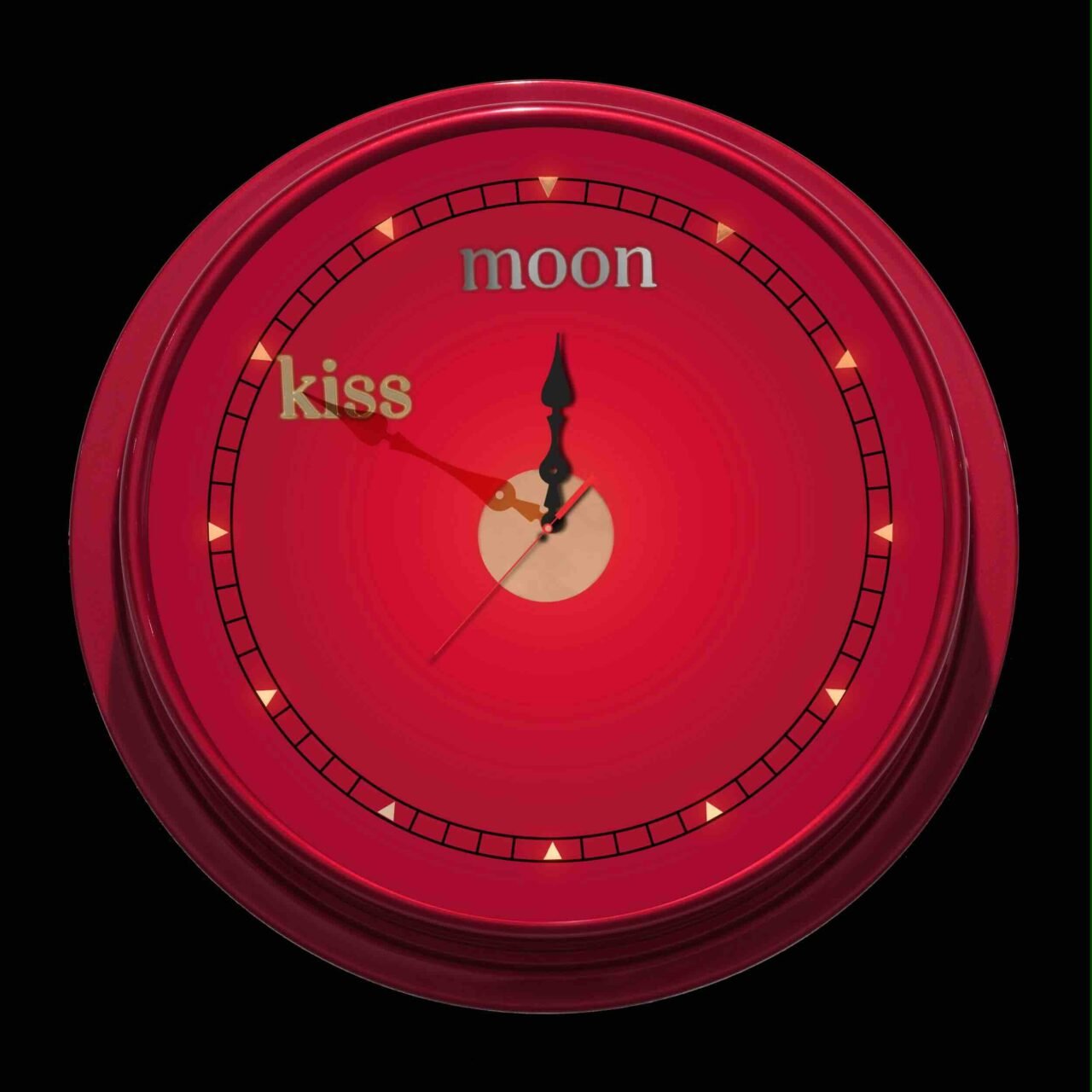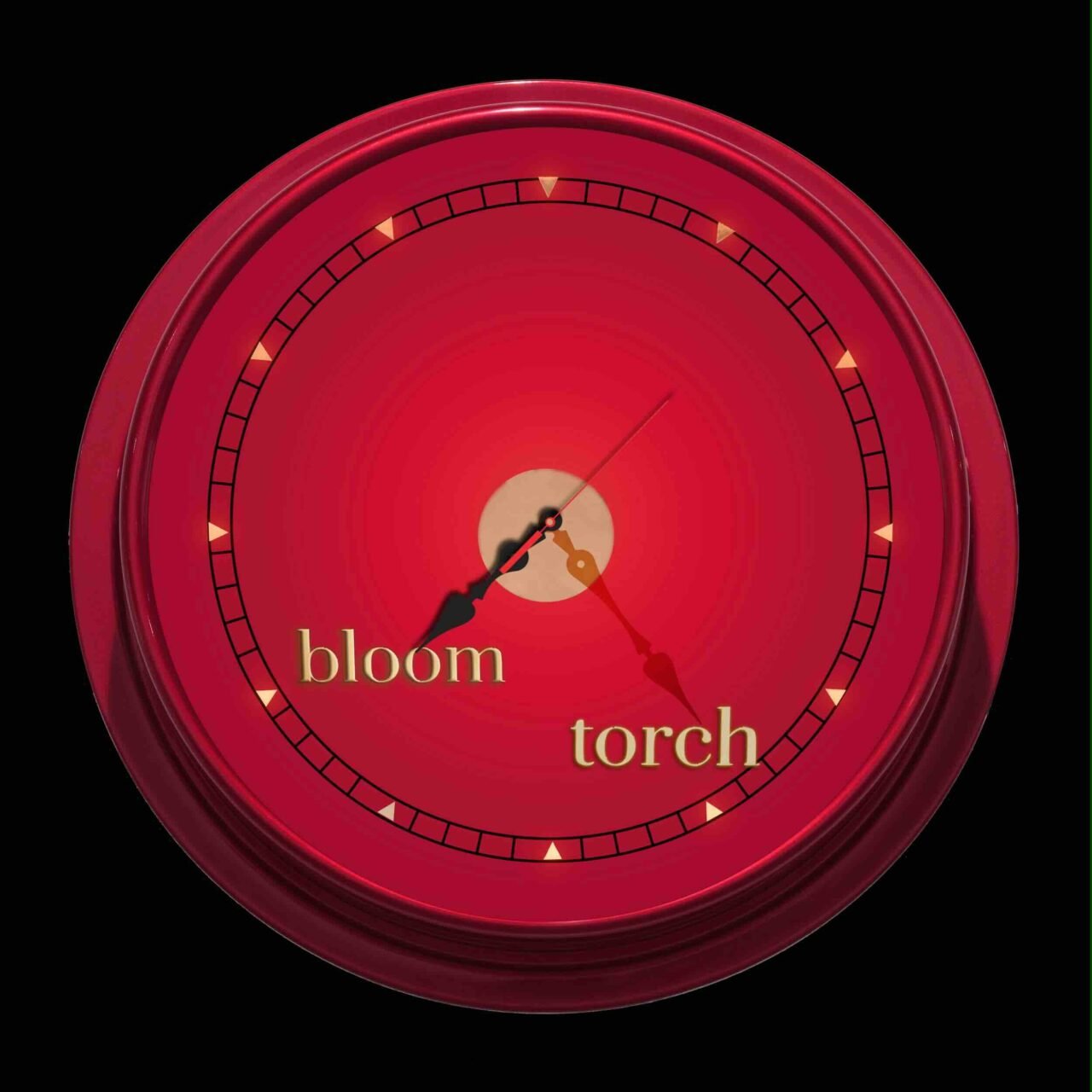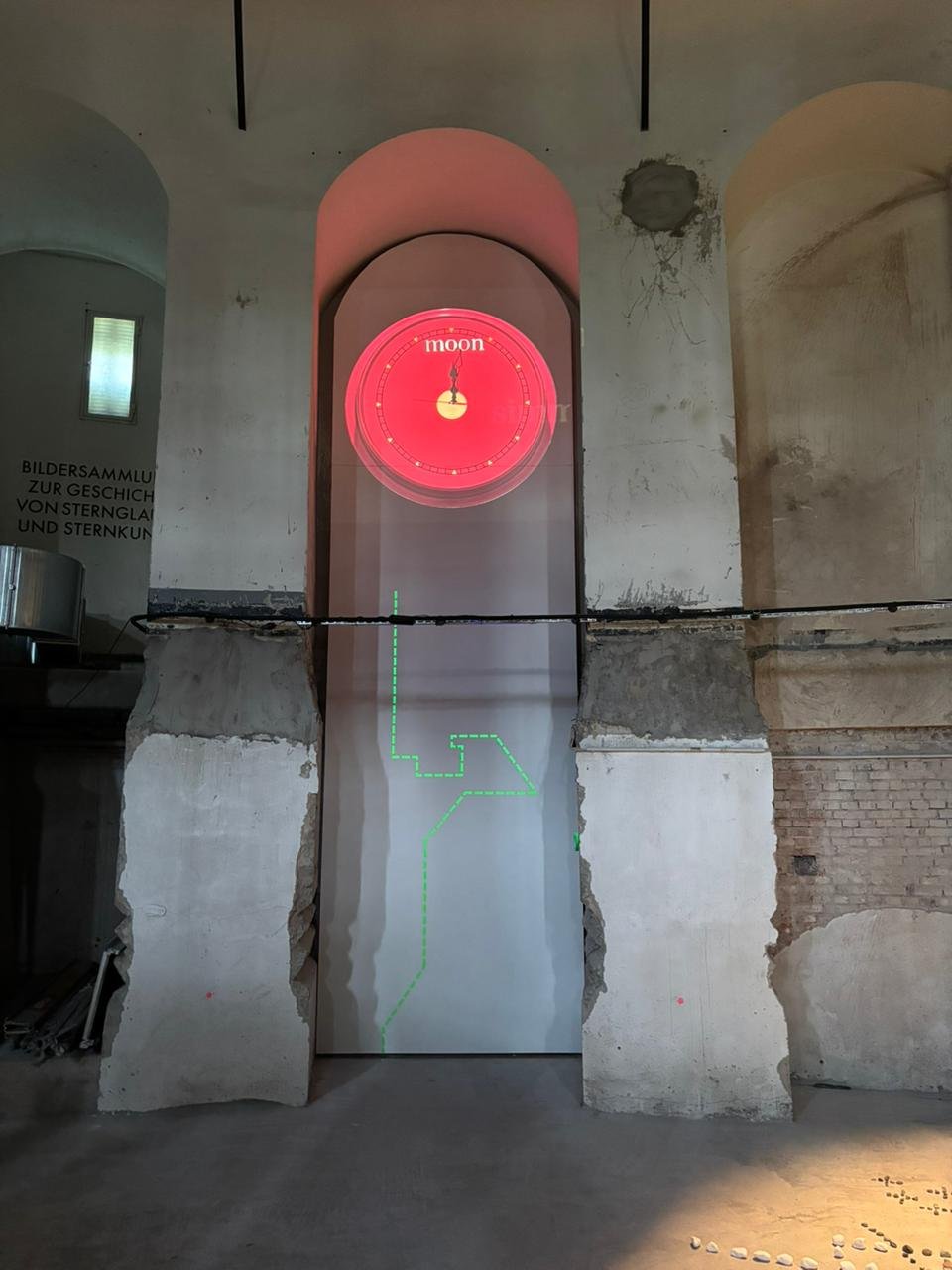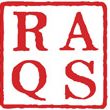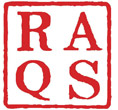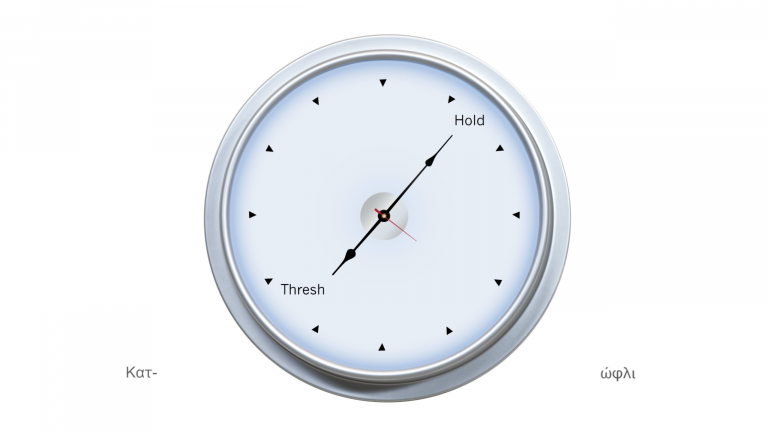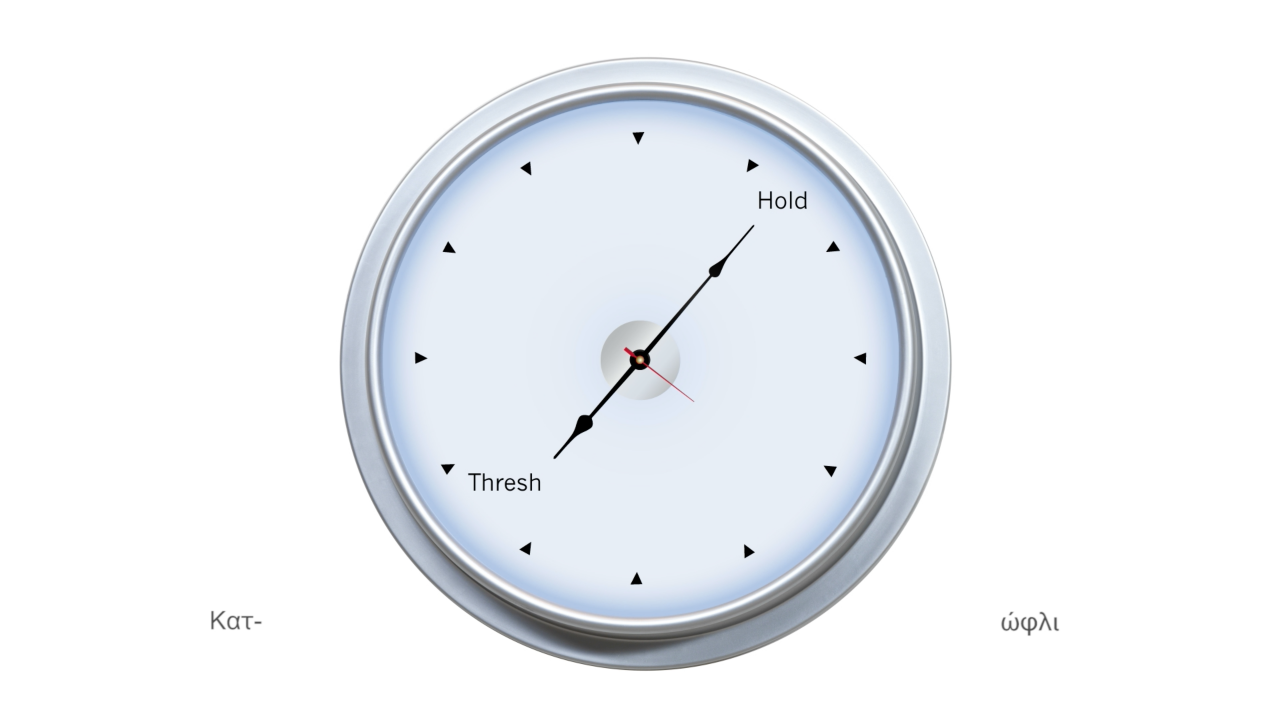Time Devices
“One question that stayed with us and has proven to continue getting exponentially more complex is that of time. The 90s had posed the scrambling of time in ideas of development, progress, or modernity.
During that time, as very young people, we examined and re-examined what progress could even mean. We have, from then, been unpacking the visibility and linearity of time.
-Jeebesh Bagchi,
for an interview with Curator-Guide
Time, in its boundless complexity, has always been a central preoccupation for Raqs Media Collective. The works featured in Time Devices unravel the many facets of temporality—its rhythm, its fluidity, its ruptures, and its ability to shape human experience.
Each work reimagines, expands and transforms the ways in which we encounter and interpret time— inviting us to perceive time not just as a continuum, but as an interplay of personal, cosmic, and historical dimensions. Together, they act as devices to rethink how we measure, inhabit, and imagine the passage of time— unfolding a dialogue that redefines the past, the present, and the possible.
***
Whenever the Heart Skips a Beat
Shown at: ’48 SHEET Billboard Project’, Brimingham (2012) | ‘Untimely Calendar’, National Gallery of Modern Art, New Delhi (2014) | ‘Twilight Language’, The Whitworth, Manchester (2017) |’Everything Else is Ordinary’, K21, Museuem of 21st Century Art, Düsseldorf (2018)
Animated Horological Video, Words
Duration, 4’31”
Whenever the Heart Skips a Beat is an animation presenting a clock-face with changing word couplings – instead of numbers – in order to reference the passing of hours. The words are an array of adjectives and nouns that qualify each other, flying across the face of the clock, arranging and rearranging themselves, producing constant permutations and combinations of states of mind and being through the actions of the hour and minute hands that join two words at different points of time.
The lexical patterns produced by this process register a deeply felt, subjective experience of time and duration. This work grows out of Raqs’ sustained preoccupation with time and with the metaphorical possibilities of horology. It annotates their earlier experiment with clocks, feelings and words – Escapement.
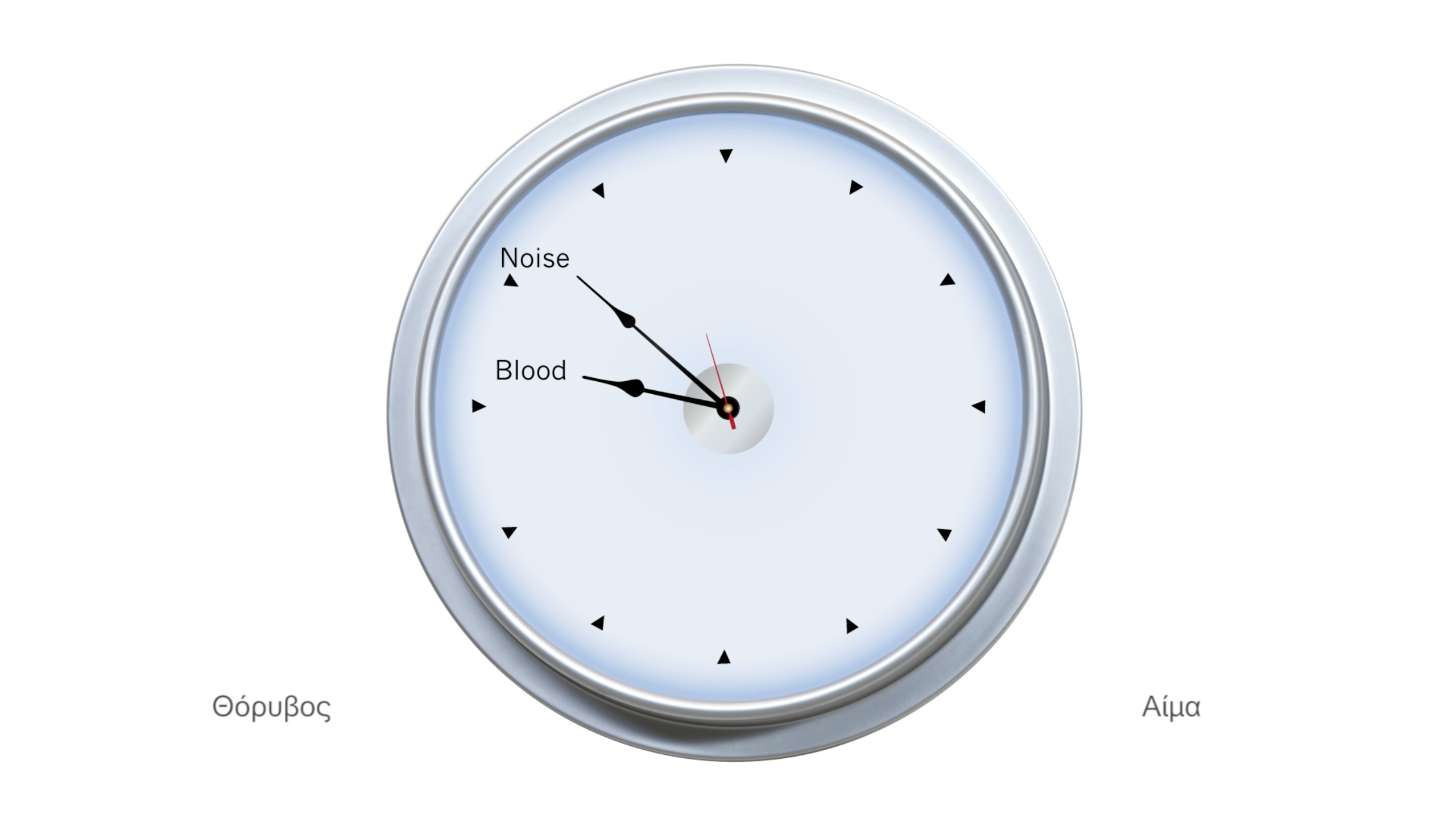

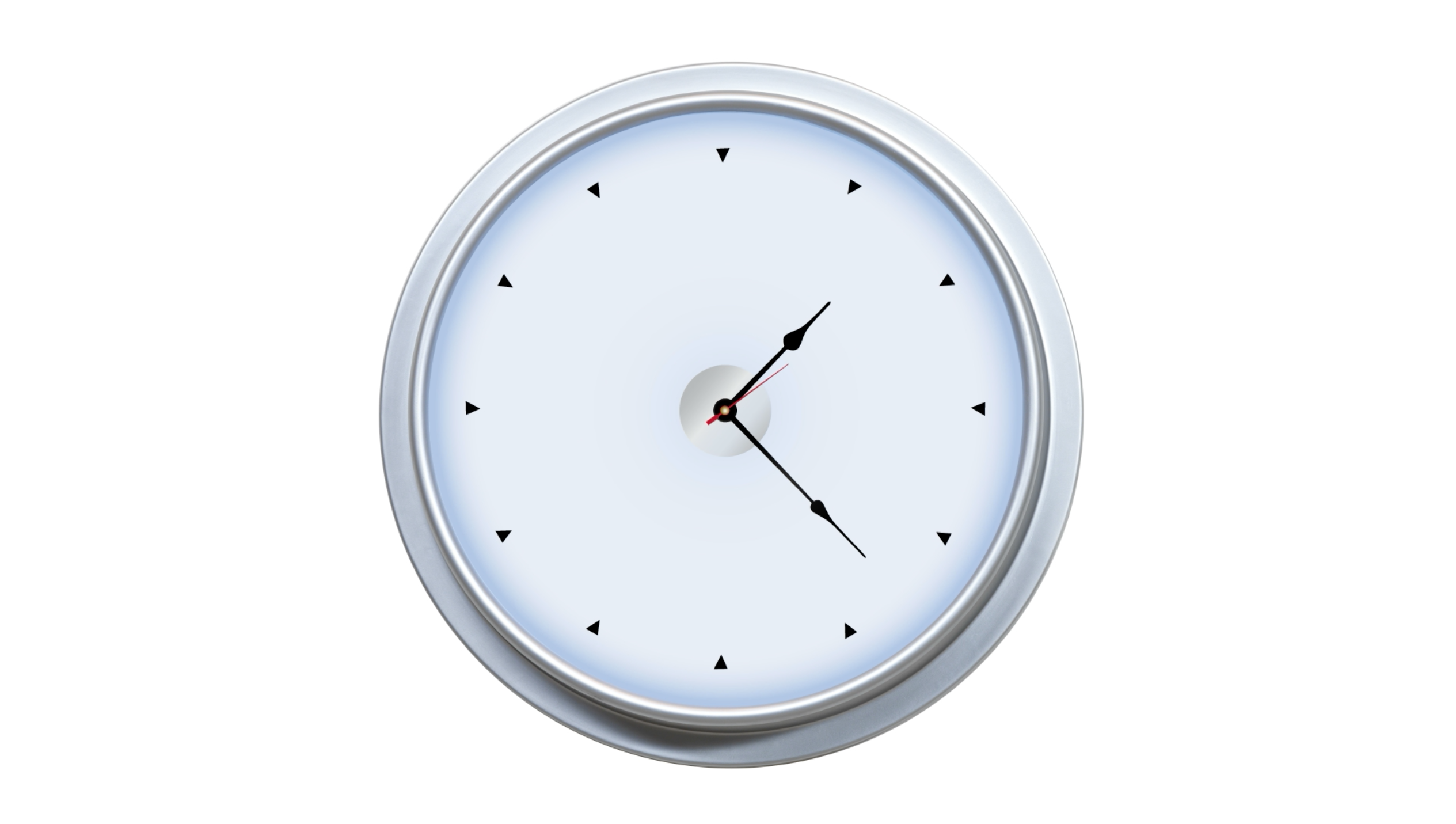
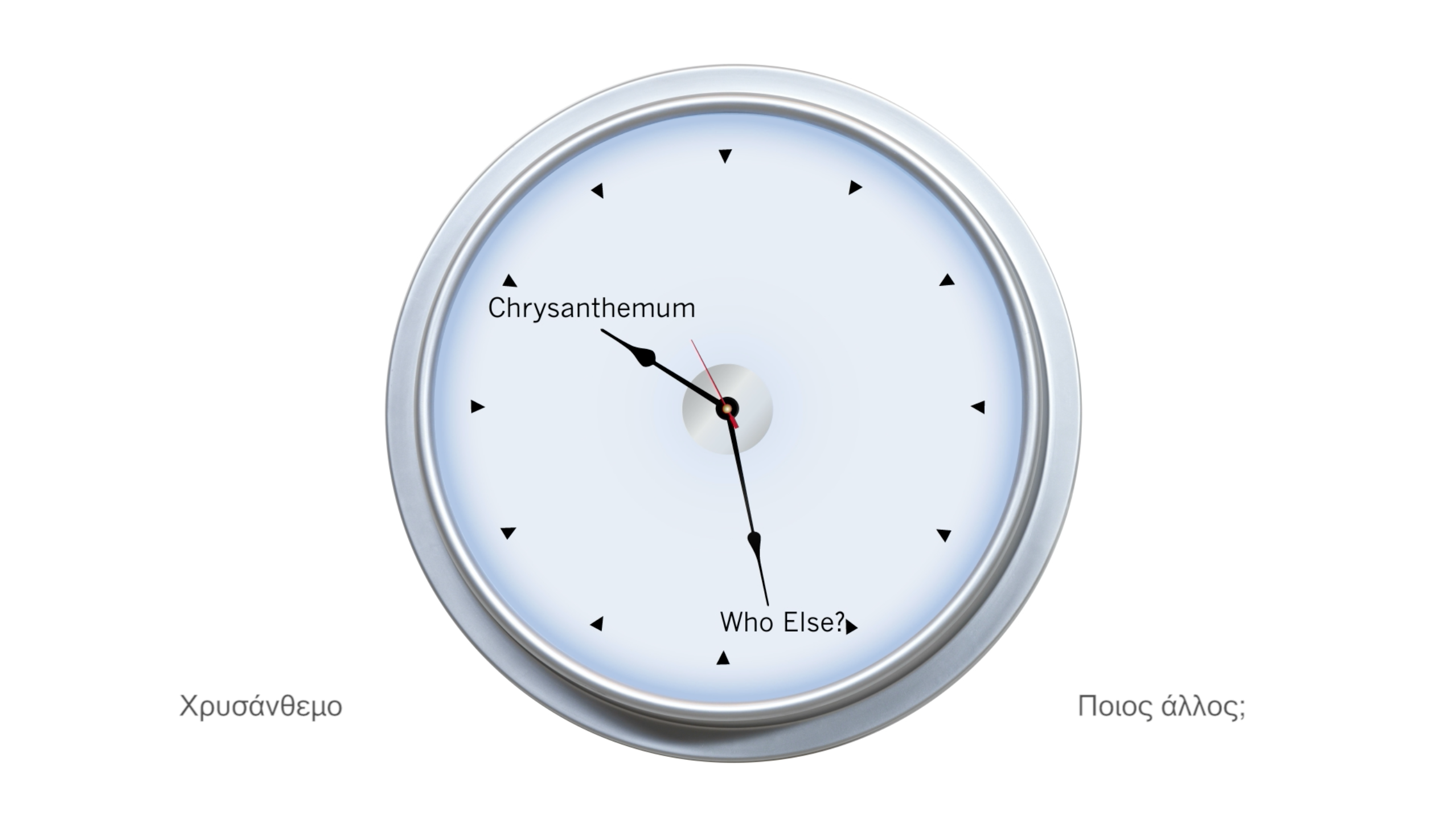

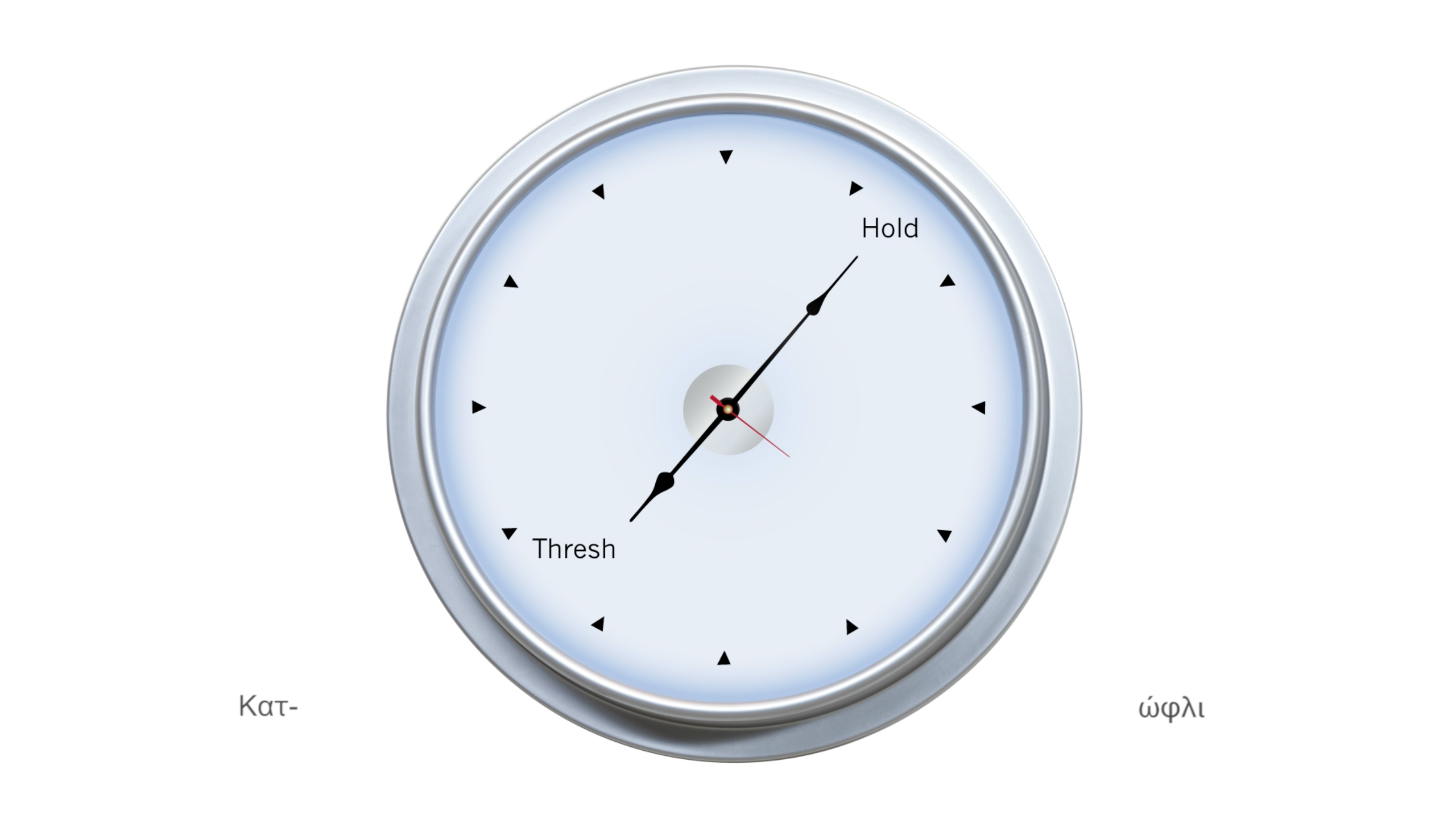
Click here to watch the video (email us on studio@raqsmediacollective.net to request access)
A Day in the Life of Kiribati
Shown at: ‘Untimely Calendar’, National Gallery of Modern Art, New Delhi (2014)
Clock, nameplate, tape
The history of clock-making saw a definite turn when devices for understanding time shifted away from the fluid principles of ancient Chinese water and incense clocks – for which time was a continuum, thus making it more difficult to surgically separate past and present. In contrast, modern clocks, with their precise ticking seconds, impose rigid separations, creating conceptual barriers between moments. This disjunction makes “now” feel distant from “then” and yet, paradoxically, connects disparate places under a shared measure of time. In a syncopated sort of way, we are contemporaneous with other times and spaces
In this syncopated simultaneity, the clock becomes a symbol of both concurrence and dissonance. While London and Lagos may share the same time, their experiences of “now” diverge, shaped by local contexts and histories.
A Day in the Life of Kiribati gives the time of Kiribati, the first land on Earth to switch the calendar over to 2000, and which could be the first place on this planet to disappear with rising sea levels because of global warming. Here, timekeeping becomes both a marker of continuity and a reminder of impermanence.
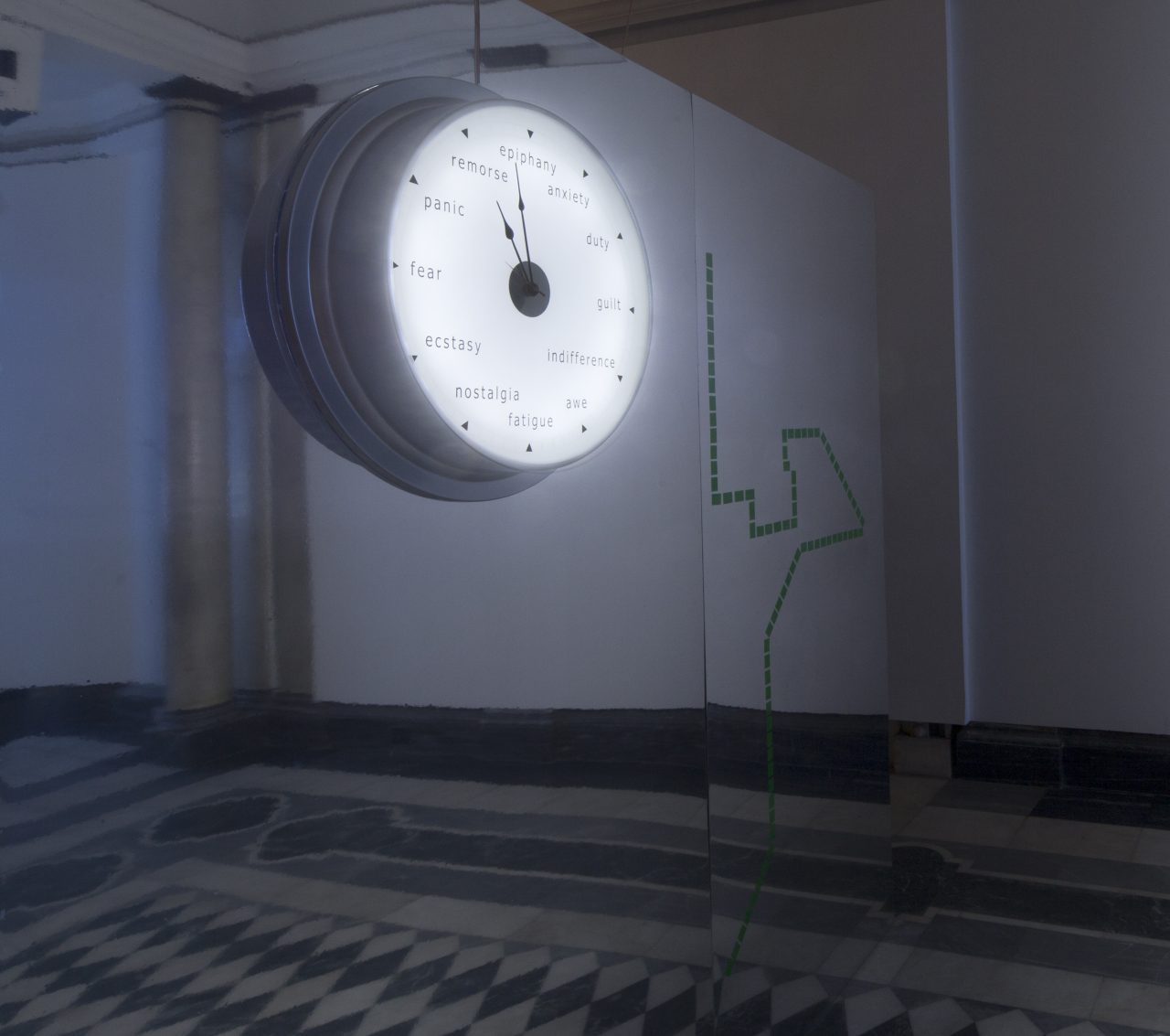

The Ecliptic
Shown at: ‘Corrections to the First Draft of History’, Frith Street Gallery, London (2014)
Clock, aluminium, acrylic, LED lights
55 x 55 x 15 cm
The Ecliptic reimagines the passage of time through a bespoke clock that blends inscribed words, shifting light, and syncopated electrical impulses. It disrupts the uniformity of moments, embodying the duality of time as both constant and in flux.
The Ecliptic, the celestial path traced by the sun, becomes a metaphor for change and continuity. Along this arc, seasons transform, days unfold, and time oscillates—freezing and thawing in an eternal rhythm. It offers a perpetual escape, guiding one beyond the confines of here and now, every day, all the time.
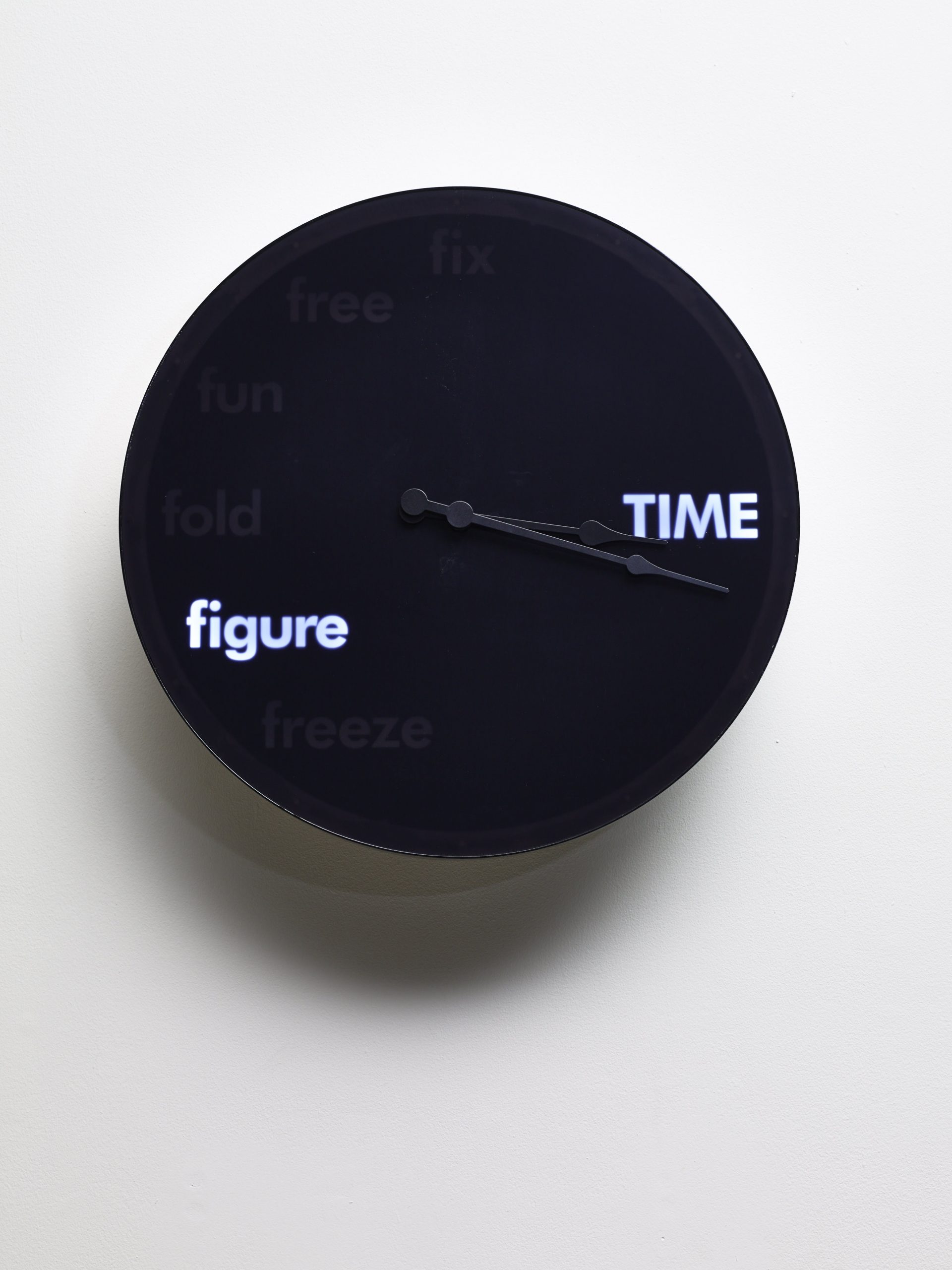
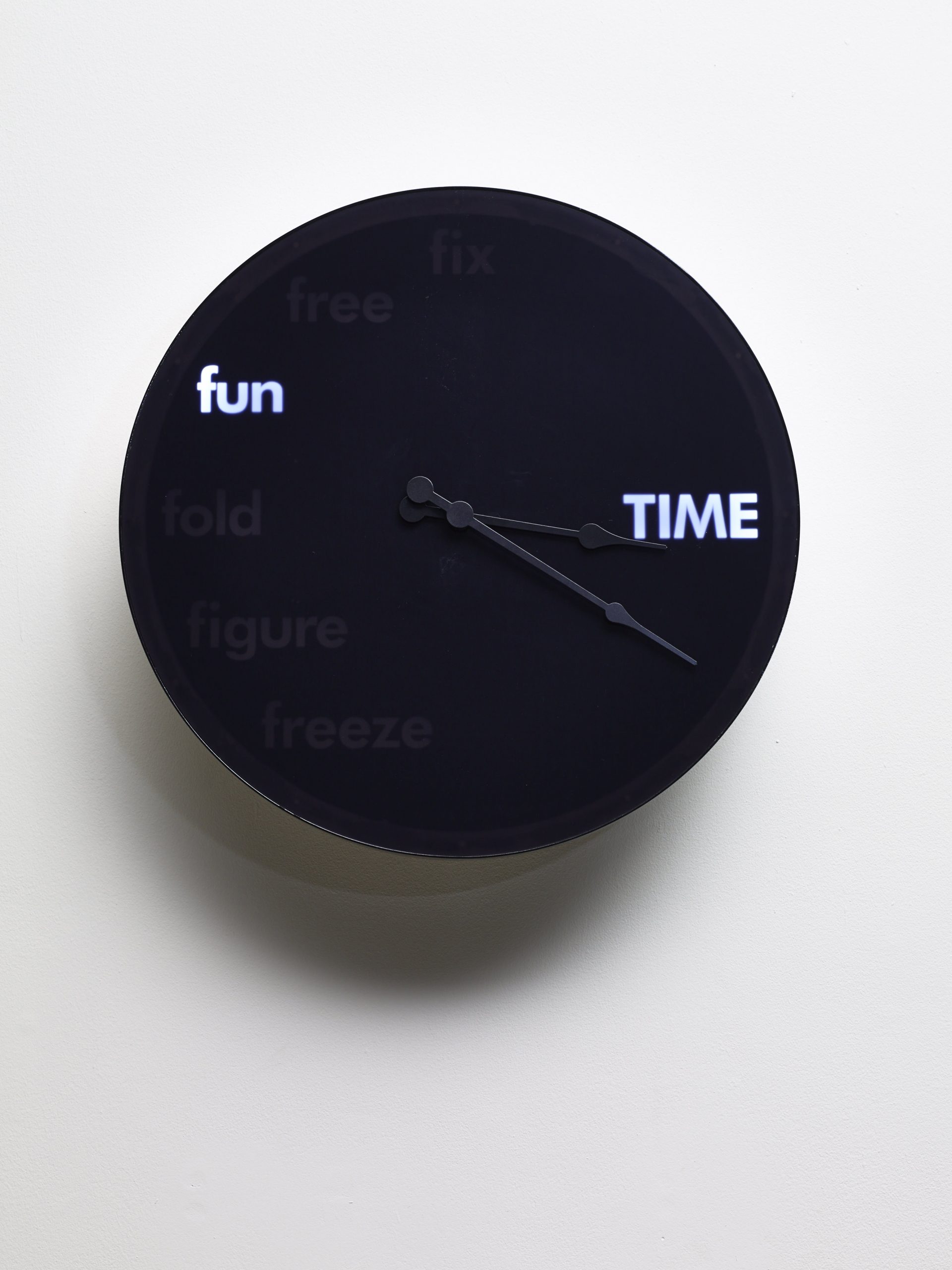

Sleep, Clock
Shown at: Project 88, Mumbai (2018)
Two synchronised lenticular fields, Clock Faces, Text
2 X 2 ft. each
Sleep, Clock reflects the intimate rhythm of existence through a pair of synchronized clock faces. The alteration between waking, working, sleeping on the one hand, and the beginning and end of life on the other are the two sets of movements that stand behind the conception of this piece.
By charting these intertwined patterns, Sleep, Clock captures the essence of time as both a universal and deeply personal experience—marking the passage of every day and every life.
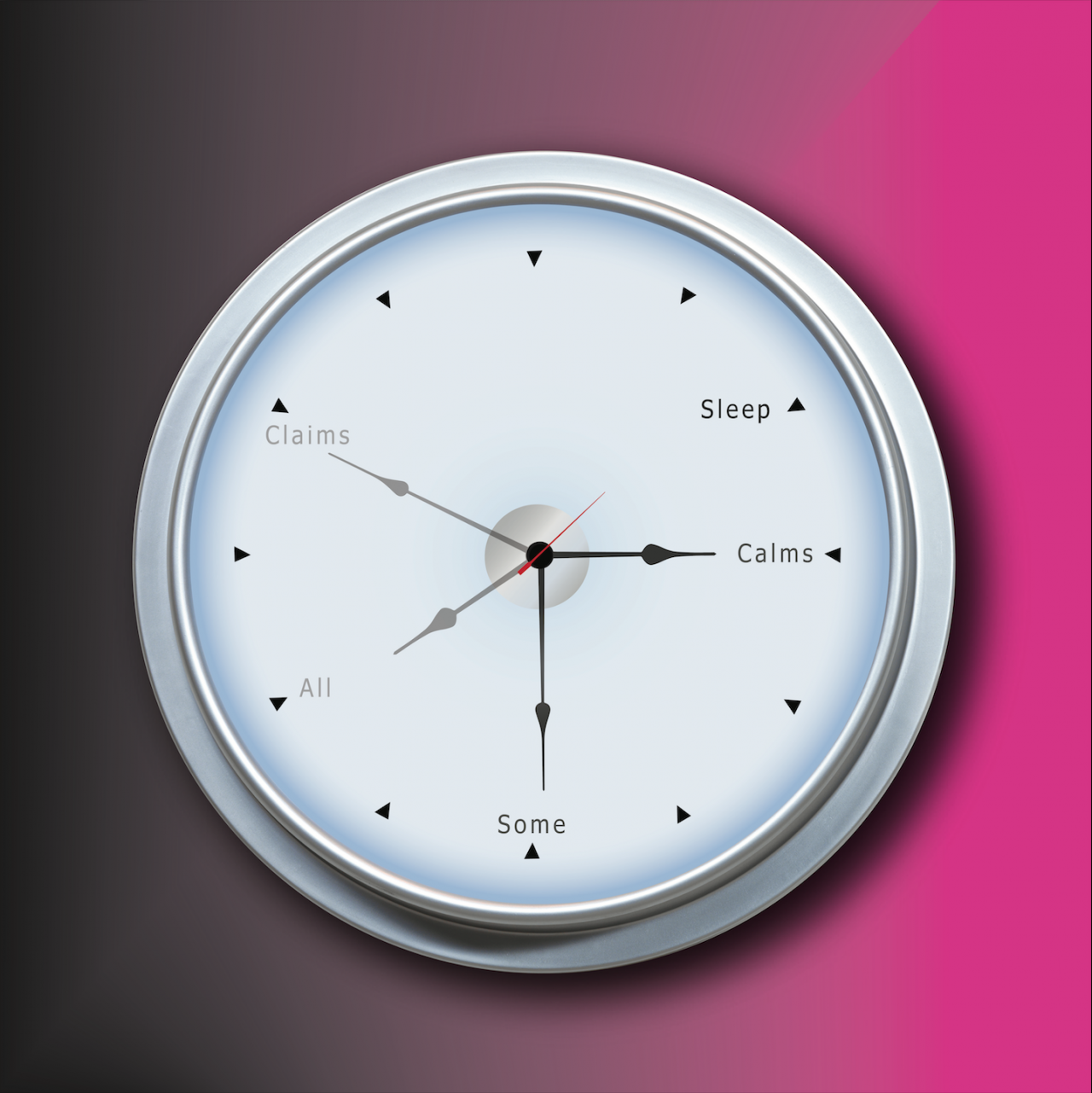
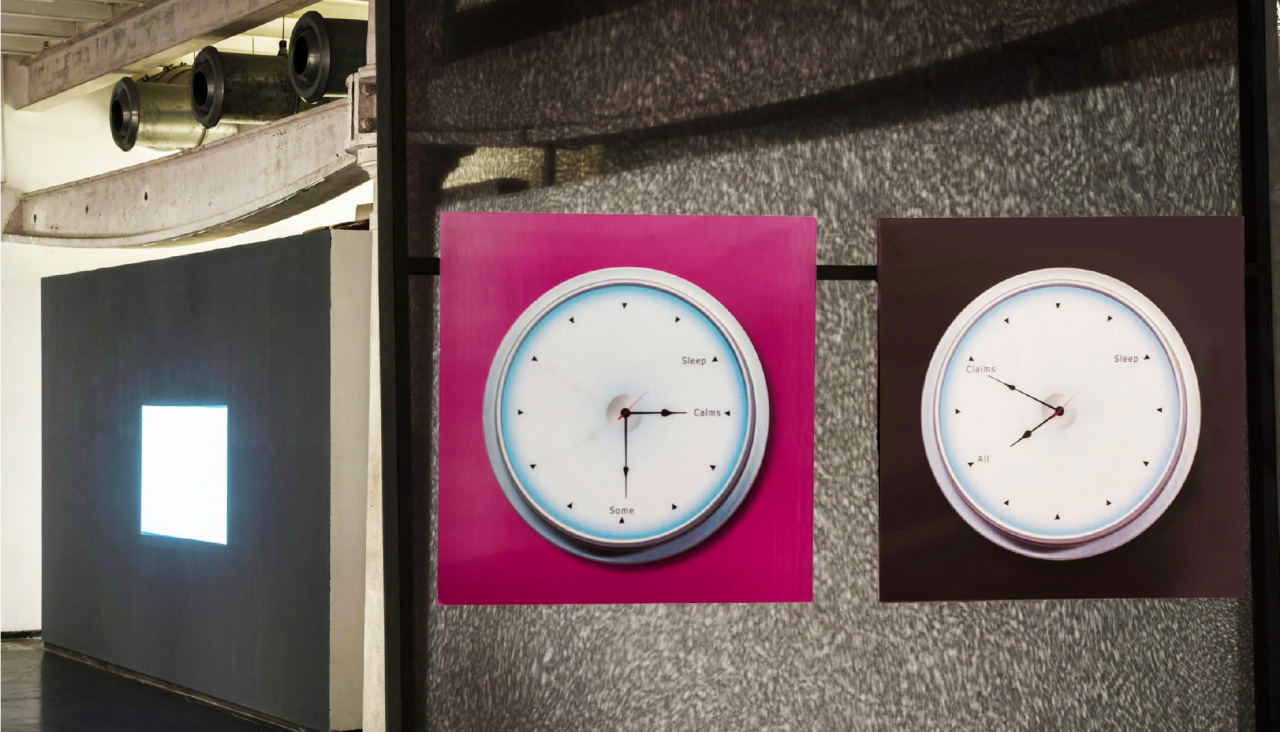
Moon Clock
Shown at: Frith Street Gallery, London (2024)
Aluminium, UV printing, Acrylic, paint, LED light, Foil
65 x 65 x 13 cm
The Moon Clock is a device to tell the time. With the passing of the hours, it clocks the waxing and the waning of crimson moon-minutes. And so, on a certain hour, it may be a moment to moon-surge, an hour of moon-shimmer, another of moon-bleed, and the unexpected, though twice daily, hour of moon-rapture.
Or we could say, that at one is a surge, at two, a knot that simmers until it’s three. At four the skin begins to glow and then it blazes like a torch at five. At sixes and sevens we come undone, bleeding. And then at eight we bloom. Growing rapturous at nine to steal a kiss at ten, until we are drenched at eleven waiting for the midnight moon again.
All of these describe the ways in which the moon affects us, in our hearts and on our skin, altering our sense of lived time. Raqs turns to make a device so that objective, common time can be folded inwards to that place where the duration between blooming by moonlight and being drenched by moonshine becomes a legible passage.


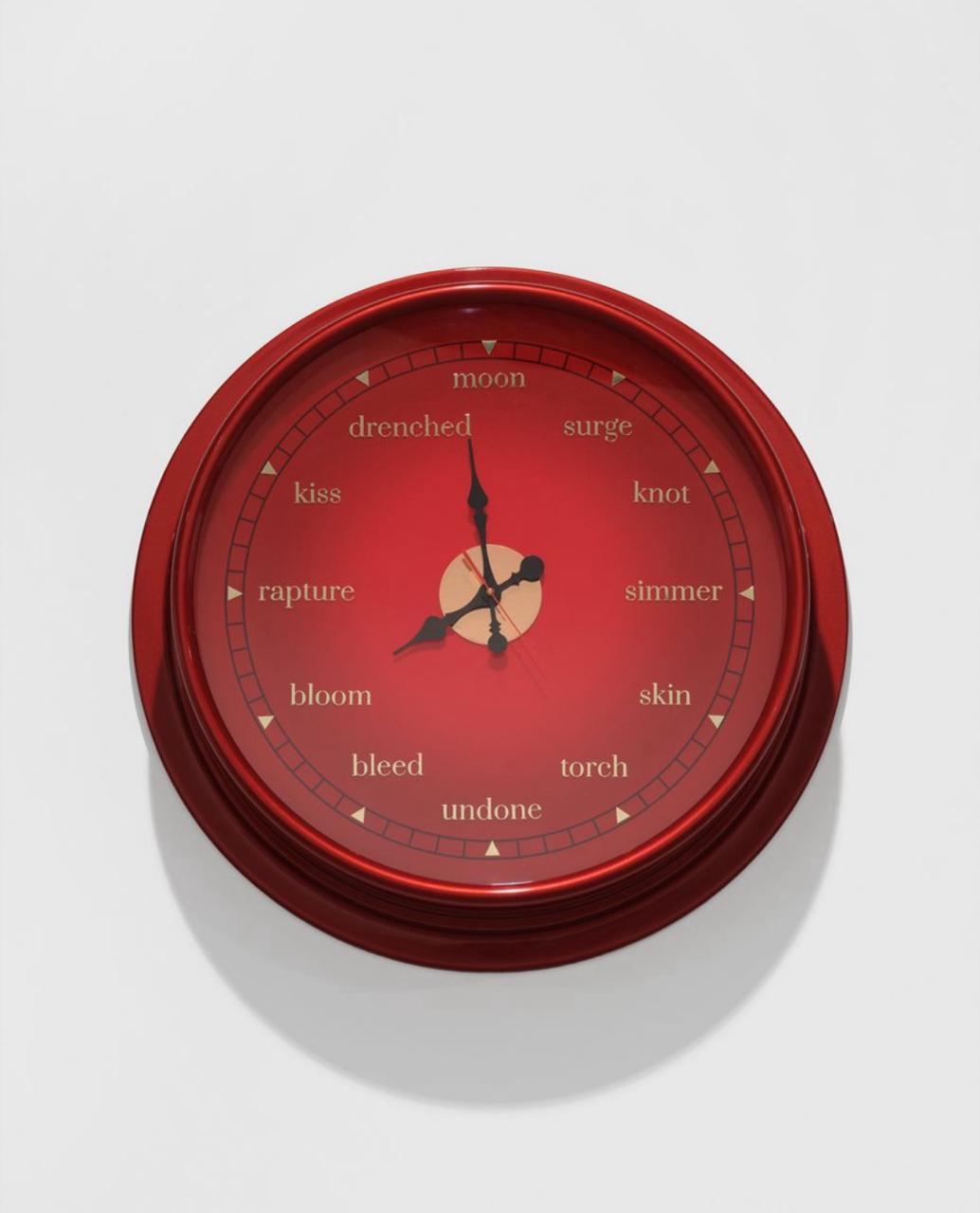
Blood Moon
Shown at: ‘From the Cosmos to the Commons’, Stadtkuratorin Hamburg (2025)
Blood Moon is an invitation to stay with a passage of time in the way we imagine and inhabit it. It draws the viewer into an unfolding encounter felt through the body and the moon. The moon is not just a celestial body, it is a force that stirs the skin, unsettles the heart, and reshapes the tempo of lived experience. Here, time is not measured by uniform beats, but by pulses of intensity: a shimmer, a blaze, a bloom.
This work expands on Moon Clock, shown at the Frith Street Gallery (2024)— a sculptural device that renders lunar rhythms into a clock of moods and surges. Blood Moon extends into an immersive video experience, allowing a deeper engagement with the force of the moon and its affective pull on human time.
